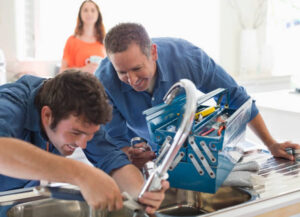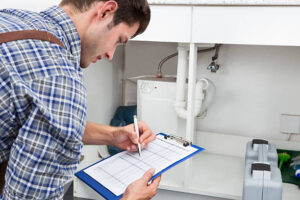Your outdated water heater has therefore at last kicked the bucket. It ran well, but right now it’s leaving you with icy showers and a sense of betrayal. Time enough for a gas hot water heater replacement. Allow me to dissect it here.

Before delving into the replacement, let’s discuss the red flags in your water heater. Some heaters really, if built-up sediment causes a loud popping sound, go out with a blast. Some simply silently seep their way into retirement. It’s time to say farewell if your water is lukewarm at best, smells like rusty pennies, or your utility bill shows unexpectedly high spikes.
Choosing the Right Substitute
Though things are never that straightforward, you would think choosing the same type would make replacing an old heater with a new one very easy. Water heaters have changed in nature. Efficiency requirements have evolved. The plumbing in your house could contain peculiarities that make a straight switch difficult.
First of all, size really counts. Too little, and before the hot water runs out you will be sprinting to the shower. Too huge; you are wasting money down the drain on expended energy.
The energy efficiency factor follows from this. Better heat retention and insulation on modern models will help you save some money over time. More on it later; be cautious of higher-efficiency systems needing more venting adjustments.
The Elimination Process: Out with the Older
If your present heater is more than ten years old, most likely developed a love-hate relationship with its surroundings. From rust, corrosion, and silt build-up, removal becomes more difficult than first anticipated.
First, turn off the gas supply. no exclusions. Ignoring appropriate safety measures while messing with gas pipes is like running with explosives in your house. The water supply shuts once the gas is off, hence the tank has to be emptied.
Sounds basic too. Until you find that the drain valve on your heater has become a blocked mess from silt accumulation. Sometimes the stream is steady instead of slow. Other times you are battling a minor flood. Prepare buckets here.
Disconnecting the gas line and water lines comes second once drained. If your heater has been sitting there for fifteen or more years, you might expect some tough connections. Perhaps some choice words and a little elbow grease will be required.
Getting the New One: Juggling Act
Orientation of the new unit comes first once the old one is off the road. This section goes beyond simple messy knotting and sloppiness. Placing is important. Should your new heater be even slightly bigger, clearance problems could develop.

Reconnections of the gas line call for accuracy. Leaks from improper fittings can cause havoc in a house; nobody wants an unexpected gas leak. Before launching it, leak test everything. If there is a problem, a simple soap-and- water mixture on the connectors will show; bubbles indicate trouble.
Still another vital consideration is ventilation. Older units may had easier venting systems, even if current ones could demand more changes.
The Initial Fire Ignition
Moment of truth as applied here. Water line connections secured in place Ask questions. Appropriate seal on the gas line Ask. Pilot light set ablaze. With luck, on the first try.
Look for anything strange while the tank fills. Normal is a little hissing or gurgling as air cleansers leave the system. Shut it down and double-check everything, though, if there are loud bangs, constant bubbling sounds, or an unusual scent persisting.
Not really close. A little post-installation maintenance can help to avoid later problems.
Firstly, change the thermostat. Many heaters come default at a temperature hotter than required. Water should be kept warm enough without scorching your hands every time you wash them about 120 F.
After several hours, then, look for leaks. Sometimes fittings slack as they settle. One last short check guarantees dryness.
Finally, empty the tank once a year. Sand accumulation reduces the lifetime of a heater. A basic annual flush helps everything run as they should.
Hiring a Pro vs. Doing It Yourself: Which is Better?
By now you could be thinking, “I could probably handle this myself.” And perhaps if you are comfortable handling gas lines, plumbing connections, and any venting changes. For many homeowners, however, paying a professional is the faster, safer, and more dependable choice.
Local building codes are your main obstacle if you are choosing the do-it-yourself path. Installations of gas appliances call for many permissions and inspections in several places. Ignoring this may result in fines or perhaps cause you to redo the work should it not pass an inspection later. Furthermore always at risk are a gas leak, inadequate ventilation, or defective installation causing carbon monoxide generation. Not one bit of that justifies a few hundred dollars in labor savings.
Usually providing a warranty on the installation, a qualified plumber or HVAC specialist can handle the operation efficiently and assure suitable compliance. You are not thereby caught footing the repair fee should something go wrong. If you’re not sure, at least seek a quotation before deciding to do it yourself.

What Should You Anticipated to Pay? The Cost Factor
Although it’s not the most costly home improvement project, a gas water heater replacement is not the least either. A few important variables define the overall cost:
Standard 40- or 50-gallon tanks range anywhere from $500 to $1,500 depending on brand and efficiency.
Labor costs: Depending on complexity, professional installation usually adds $300 to $1,000. Should new venting or gas line changes be needed, you should budget more.
Permission fees: Certain locations charge, generally between $50 and $200, for permissions.
If your old unit has rusty pipes, outdated fittings, or a failing exhaust system, replacement parts will add to the eventual cost.
All told, most homeowners pay between $1,000 and $3,000 for a whole replacement gas water heater. Given additional installation requirements, you should expect to pay noticeably more anywhere from $2,500 to $5,000 if you are upgrading to a tankless system.


